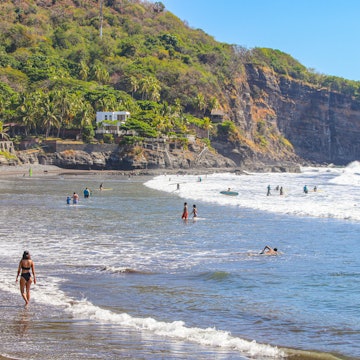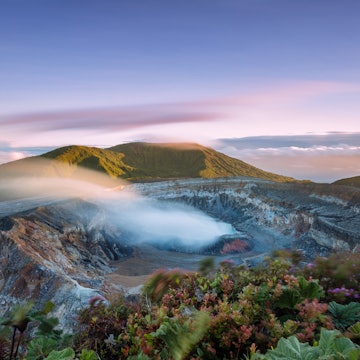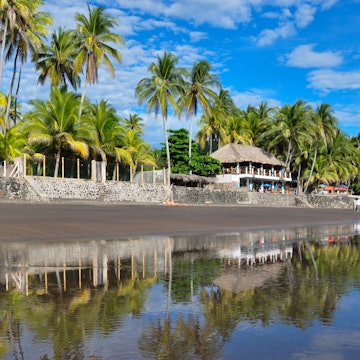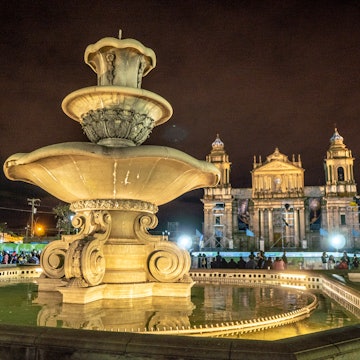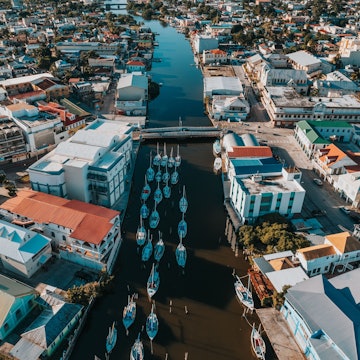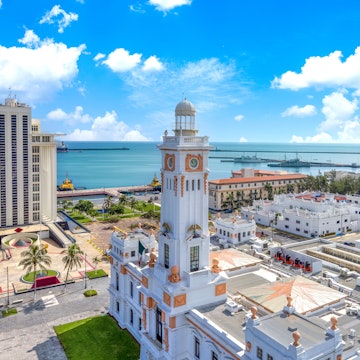

Maya temple complex with restored straw roofs at Tikal, Guatemala. Patricia Hamilton/Getty Images
From complex ancient cities to intricate stone carvings on hieroglyphic temple stairways, the legacy of the ancient civilization of the Maya people spills from the jungle across Central America. Visiting the ruins of Maya temples is one of the top reasons to visit this fascinating string of tropical, Spanish-speaking countries.
Inhabiting an area stretching from southern Mexico to El Salvador and Honduras, the Maya people are the most populous indigenous group on the narrow isthmus of land linking North and South America. An estimated 7 million Maya people call Central America home, and you can experience contemporary Maya culture at marketplaces and town plazas where traditional outfits, religious practices and languages remain proudly on display. Learn more about the best Maya ruins to visit, plus some planning tips to help you on your way.
1. Tikal, Guatemala
Best ruins for sheer grandeur
It took more than 800 years to build this vast metropolis, which is now a UNESCO World Heritage Site and one of Guatemala’s top attractions. While Tikal is only partly excavated, the site covers more than 10,000 structures, many dating back to 900 CE, when the city was at its height. This enormous complex includes soaring temples, regal pyramids that rise above the jungle canopy, inscribed stone slabs and expansive plazas.
There’s a distinctly primordial jungle vibe, with causeways connecting attractions beneath twisting canopies and dangling vines, and regular visits from monkeys, coatis, agoutis and gray foxes.
While some travelers take a quick peek at the ruins and move on, we highly recommend you plan an extended stay. There is far too much history and culture embedded in this site to cover in just a couple of hours, and many choose to stay for a day or two to get the full experience. Consider staying at one of the nearby towns, like Flores, and enjoy a welcoming community while traveling through history.

2. Altun Ha, Belize
Best for a jaunt from the coast
If the Temple of Masonry Altars at Altun Ha looks familiar, you’ve probably already seen its distinctive facade on the bottle of Belize's national beer, Belikin. However many brews you’ve thrown back, it's no substitute for visiting the temple itself, which is the main attraction at the nation's most accessible Maya site.
Although the ruins are made from large, cut stone, and the steps leading up the site can be very steep, the area is accessible for people with mobility issues. The terrain is fairly firm and smooth, and the nearby restroom has a wheelchair ramp. Parents with young children who need a stroller can also navigate the surrounding area.
A key trade center during the Classic Maya period, Altun Ha today consists of a central ceremonial plaza containing two grand temples and several smaller excavated structures. It’s a popular destination for tours from the coast, as Altun Ha is close enough to the sea to be visited as a day trip from Caye Caulker or Ambergris Caye.
3. Copán, Honduras
Best for intricate carvings
Tikal may win the prize for most impressive Maya architecture in Central America, but Copán grabs first prize for intricate carvings. Oversized stone stelae tell the story of the site's ancient Maya rulers, and the site's impressive hieroglyphic stairway is the longest known inscription of Maya text. Copán is listed as a World Heritage site, and its impressive and detailed sculptures will transport you to the Maya civilization’s golden years (from 400 to 800 CE) when some 20,000 people lived and thrived in this picturesque river valley.
A half-day is sufficient to zip around the main structures, but history buffs will want more, so consider an overnight stay. The ruins are a popular stop en route between Guatemala and Honduras, and you can find accommodations close by in the town of Copán Ruinas or in the pine-forested hills at Hacienda San Lucas.

4. Caracol, Belize
Best for the jungle setting
At the height of its power, the ancient Maya city of Caracol had a population of 150,000 people, nearly three times the modern population of Belize City. The site’s tallest building, the Caana (Sky Palace) Pyramid, remains the tallest Maya ruin in all of Belize – a 43m (141ft) marvel containing four palaces and three temples. It's the top draw for visitors to this remote site, a bumpy two hour drive from the town of San Ignacio.
Perched on a jungle-covered plateau, Caracol’s restored temples, plazas, reservoirs, terraces, ball courts and tombs stretch over nearly 88 sq km (34 sq miles), tucked into the green expanse of Chiquibil National Park. Much of the site has still to be excavated, and tropical wildlife is abundant. In fact, the site was named for the numerous snails that colonial explorers found at the site.
This one probably isn’t the best option for those traveling with young children or people with mobility limitations, given the presence of steep steps and uneven terrain. But it is ideal for adventurous travelers who not only want to visit a piece of Maya history but also better understand the broader environment in which the Maya lived.

5. Tazumal, El Salvador
Best for macabre history
The Maya sites dotted around El Salvador are not on the same scale as the ruins of Honduras, Guatemala or Belize, but Tazumal is the largest Maya relic in the country, and it’s well worth a look for its complex drainage systems, stone slabs and 23 creepy tombs. The name of the site means “pyramid where the victims are buried” in the K’iche’ language, and 33 skeletons unearthed here raise questions about Maya traditions of human sacrifice.
Large areas of the ancient site, which was first settled around 5000 BCE, remain buried beneath modern houses in the town of Chalchuapa. The most impressive item discovered here, a basalt monolith inscribed with hieroglyphics, is now on display at the Museo Nacional de Antropología David J. Guzmán in San Salvador.
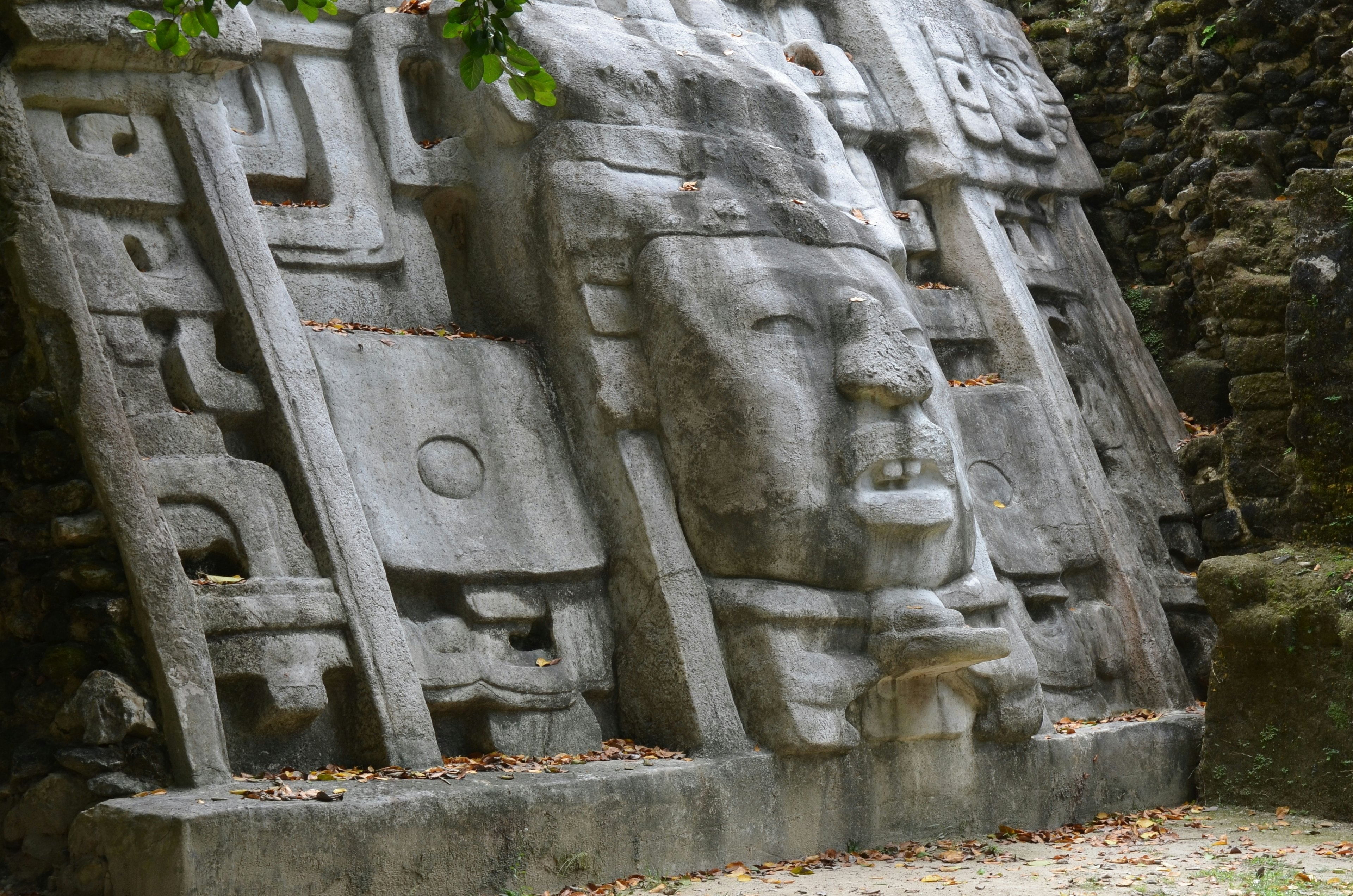
6. Lamanai, Belize
Best for a river adventure
The name Lamanai means “submerged crocodile,” and it certainly fits this large and intriguing Maya site, set on a jungle river whose crocodiles inspired some of the best-known carvings at the site. The area is remote and secluded and usually accessed via a guided riverboat trip from the town of Orange Walk (though an incredibly long drive over a bumpy unpaved road from Orange Walk is also an option).
After cruising past riverside forests teeming with tropical birds, intrepid visitors can climb a 38m (125ft) temple and gaze over the blue expanse of the New River Lagoon and a seemingly endless sweep of jungle. After exploring the ruins and the site's small museum, visitors often bird-watch along the river and visit the isolated Mennonite community of Shipyard.
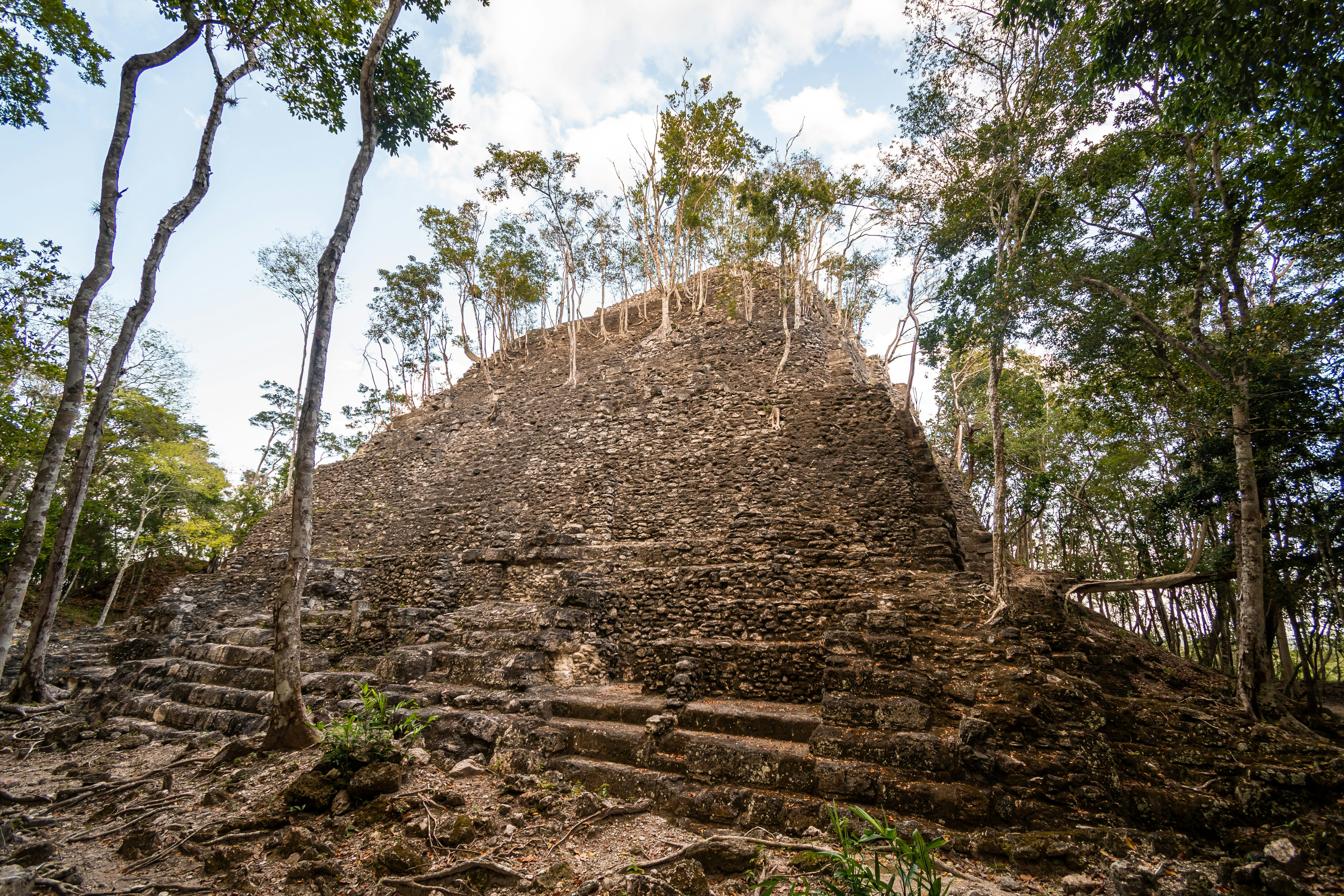
7. El Mirador, Guatemala
Best for a real jungle adventure
For those who prefer to earn their access to Maya culture, we recommend the isolated ruins at El Mirador in Guatemala. Located in the Petén jungle near Guatemala’s border with Mexico, this incredibly remote site is reached via a three-hour drive along a dirt road from Flores, then a two-day hike through the jungle (don’t forget your machete).
Explorers are rewarded by enormous structures with amazing views, climbing out of tangled jungle. The ruins include the largest pyramid the Maya ever built, and excavations are uncovering more fascinating structures every year. Guided treks from Flores take five or six days, and include visits to other hidden sites in the rainforest. Helicopter tours are also an option for adventurers with big budgets.

8. Xunantunich, Belize
Best for spooky encounters
A ceremonial hub dating from the late classical period, Xunantunich is one of Central America's most eerie sites. The name means “maiden of the rock” and its 25 palaces and six plazas are apparently haunted by the ghost of a former female inhabitant of this 1400-year-old Maya city. If you are wandering around the ruins of the El Castillo temple (the second tallest structure in Belize) and encounter a woman in white with fire-red eyes, that’s her.
Set atop a tropical ridge in Cayo District, near the border between Belize and Guatemala, this is a popular stop for travelers heading overland from Tikal to the coast. Access to the site is via a hand-cranked cable ferry across the Mopan River, adding to the sense of adventure.
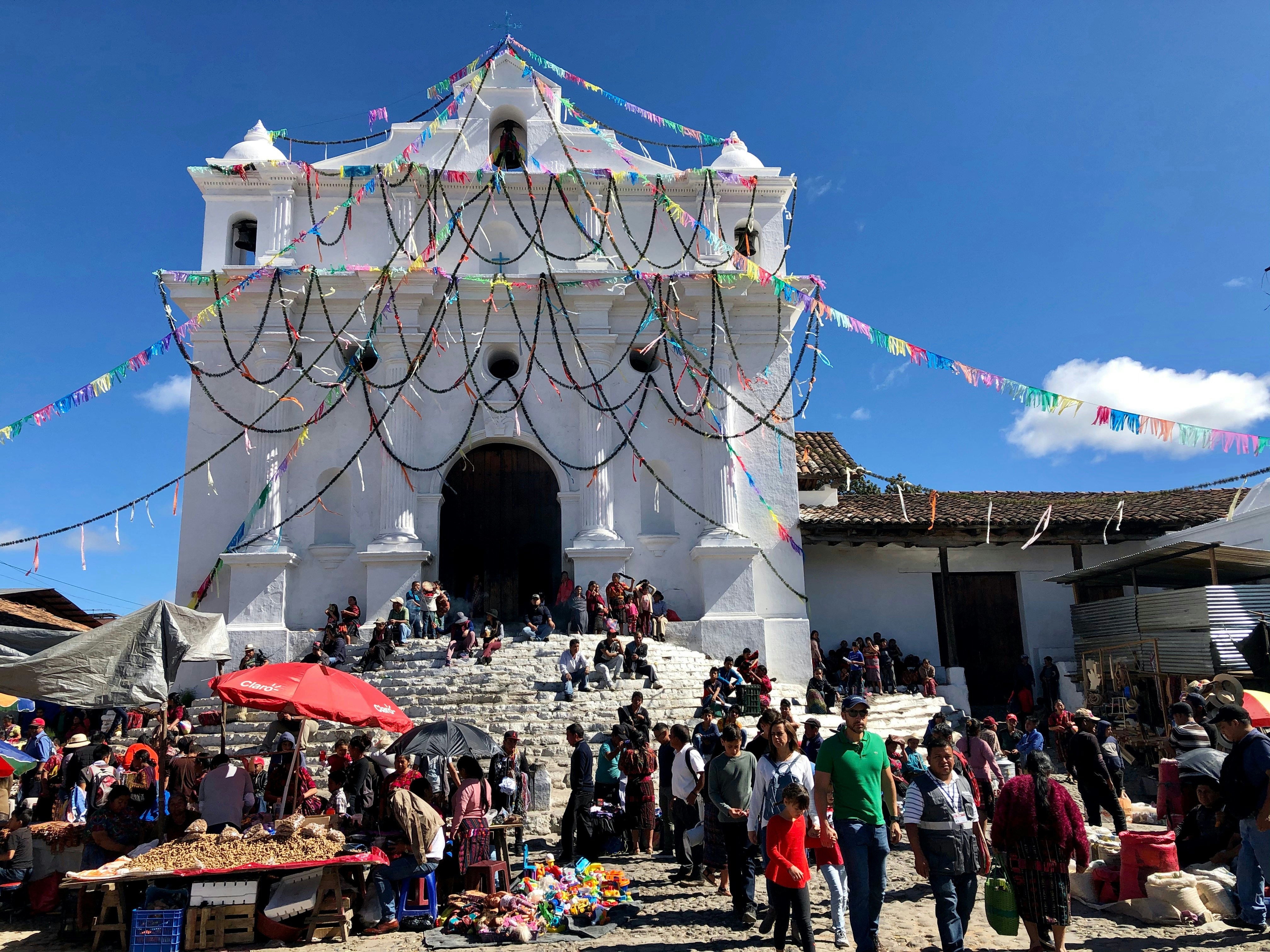
9. Chichicastenango, Guatemala
Best for living Maya culture
If you’re curious about how Maya culture has made the transition into the modern age, pop over to Guatemala’s largest traditional market in the adorable town of Chichicastenango, or "Chichi” to its friends. The serene mountain setting and narrow cobblestone streets will have travelers swooning before they even spy the busy local markets held on Thursdays and Sundays. Sprawling around the Iglesia de Santo Tomás, the weekend market sees the biggest crowds, attracting traders (and Spanish-language students) from across the region.
Villagers walk for miles to sell their wares in Chichi, with stalls trading everything from Maya textiles and local pottery to vegetables and street food. Some of the local Maya people of this area have held on to their pre-Christian beliefs, and can be observed taking part in ceremonies and leading processions to make offerings at ancient shrines outside the city.
Tips for visiting Maya ruins
Arrive early and be prepared
For the more popular Maya ruins on this list, it’s essential to arrive early – close to opening – to avoid the crowds. Make sure you wear sunscreen and comfortable shoes, bring water and keep some cash on you to tip tour guides and make purchases from local markets.
Be respectful
Follow any directions provided by the venue and your guide. Take your trash home to dispose of it and do not damage any structures or remove anything from the site.






